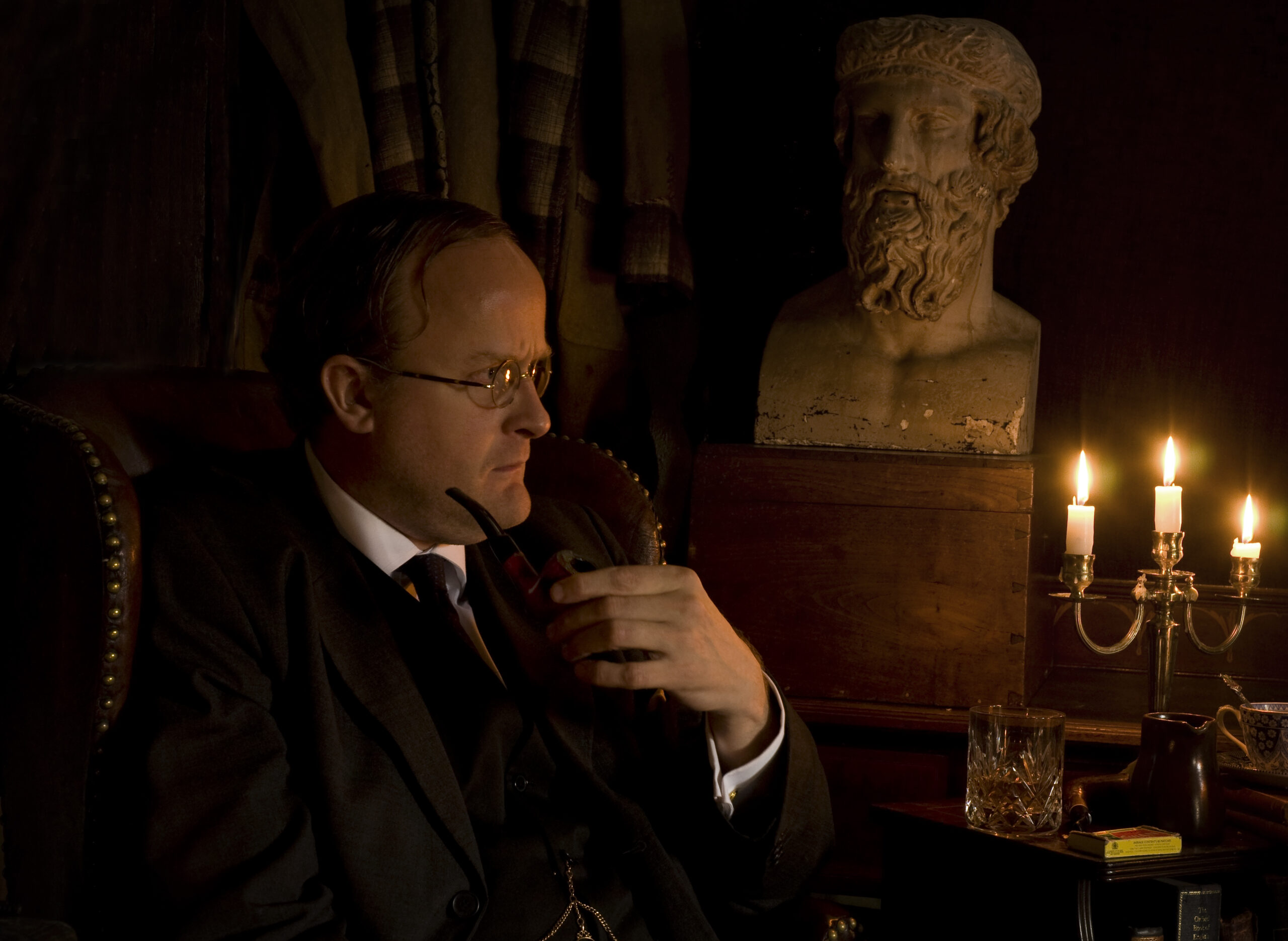While America favours Halloween horrors, Britain has long gone in for Christmas hauntings – a tradition actor and writer Robert Lloyd Parry is steadfastly continuing with his adaptations of the now infamous ghost stories of M.R. James.
“I got into James probably when I was about 13 years old,” he said. “At the time, I was very into Sherlock Holmes and Dungeons and Dragons and Fighting Fantasy gamebooks, so James’ mixture of fantasy, monsters and Edwardian men doing their thing appealed to me, but it wasn’t until I was about 30 that I really got into him.”
From that early exposure to James’ stories, though, Parry had a sense of their oral quality. “Whenever I read them, I could hear them in my head,” he recalls. “I kind of knew how they were supposed to be spoken, and I guess that stayed with me and fed into what I do now.”
He first began adapting the stories for the stage in 2005, when he was working in the education department at Cambridge’s Fitzwilliam Museum. “There was an exhibition at the time called the Cambridge Illuminations of all the painted medieval manuscriptions in Cambridge college collections, and I was writing the audio guides.
“M.R. James had laid the basis of this – he was the first person to catalogue the manuscripts – so the curator of the exhibition, who was also a James admirer, thought it would be quite fun, as a fringe event, to host a reading of ‘Canon Alberic’s Scrapbook’ in her office, which was once his office, in the Founder’s Library, but I got a bit more ambitious and decided to do it more as a performance, and also performed ‘The Mezzotint’, its natural partner.”
There is, Parry emphasises, a difference between a simple reading and the performances he gives. “To me, a reading is someone up in front of you literally reading from a script or a book. What I try to do is suggest a kind of character – a Cambridge don – who is sitting with his friends and telling them the story in the way that the M.R. James narrator does, as if it’s a real experience – something he’s either heard or experienced himself.”
Are the stories scary, though? To Parry, no. “When I do the performances, some people say they’re frightened, and that kind of surprises me,” he says. “The written word and the spoken word are, to me, always less viscerally frightening than images.”
But when I remind him of a moment in ‘A Warning to the Curious’ – one of James’ best-known tales, especially since its adaptation for the BBC’s A Ghost Story for Christmas strand in 1972 – in which the protagonist utters the simple line, “That wasn’t my coat,” he acquiesces. “Talking about it now, I have a little chill, actually,” he admits.
The most disturbing elements of the stories, he suggests, are not their ghosts, but the sense of having made a mistake that cannot be atoned for. “You have the same kind of terror in ‘Count Magnus’ [recently adapted by Mark Gatiss for this year’s A Ghost Story for Christmas slot], where the protagonist keeps saying, ‘What is this that I have done?’ He’s done something awful, but he doesn’t even know what it is that he’s done.”
Audiences can expect at least moderate frights, then. “Of course, I want there to be tension,” Parry says. “I get some people going, ‘I could never go to that because I’m not very good with scary things,’ but that’s missing the point. It’s not like sitting down and watching The Exorcist or The Blair Witch Project – it’s going to scare you in a way that leaves you feeling satisfied!”
A medievalist scholar by day, James drew on historic perceptions of ghosts as vengeful, corporeal entities, while setting his stories in recognisable contemporary settings. “‘Canon Alberic’s Scrapbook’, for instance, is full of real detail,” Parry notes. “It places you within a very real world, a world that you know exists, and into that world that you feel you know comes this unknowable, horrific thing.
“There are the bones and the skin and the hair, but what he does just as effectively is the half-glanced thing seen with the tail of the eye; the sound heard first in the distance. He talks about the well-managed crescendo, and I think that’s one thing that makes him so effective.”
The key to adapting the stories, Parry adds, is a sense of direct engagement with the audience. “Jackanory was one of the models I had in mind when I first started doing this,” he says. “I remember Tom Baker doing The Iron Man on Jackanory – not in much detail, but I remember the feelings that swept over me as I watched it. I was completely compelled and thrilled!”
Anyone looked to be compelled and thrilled by Parry himself can find details of – and buy tickets for – his forthcoming performances at nunkie.co.uk.



Leave a reply
Your email address will not be published.